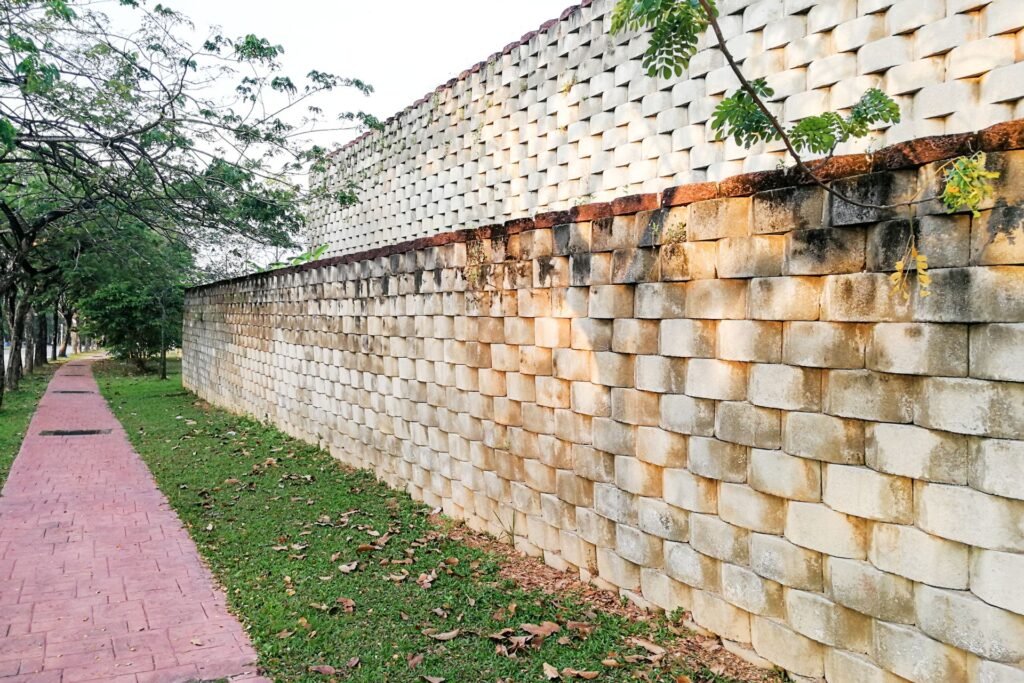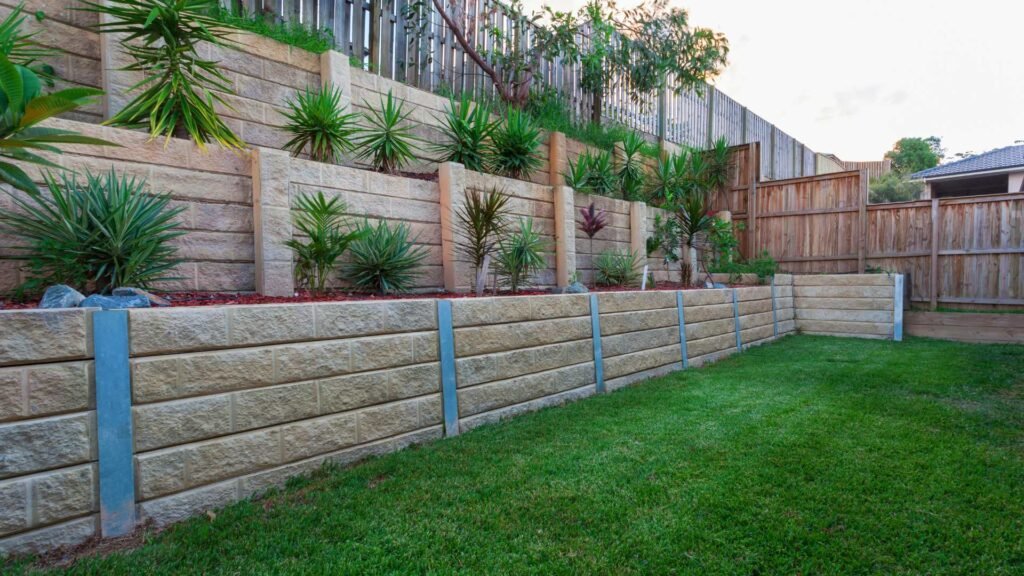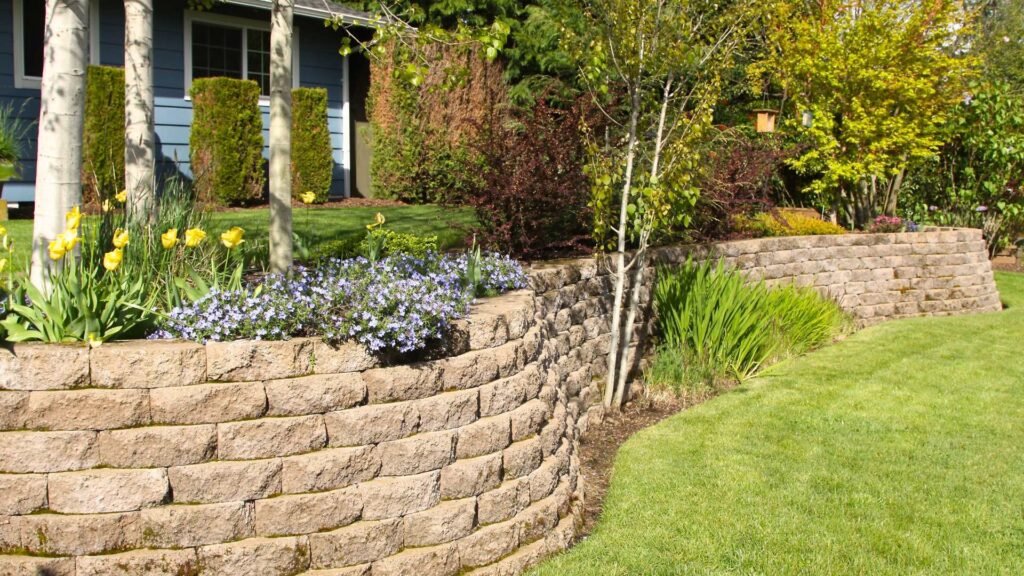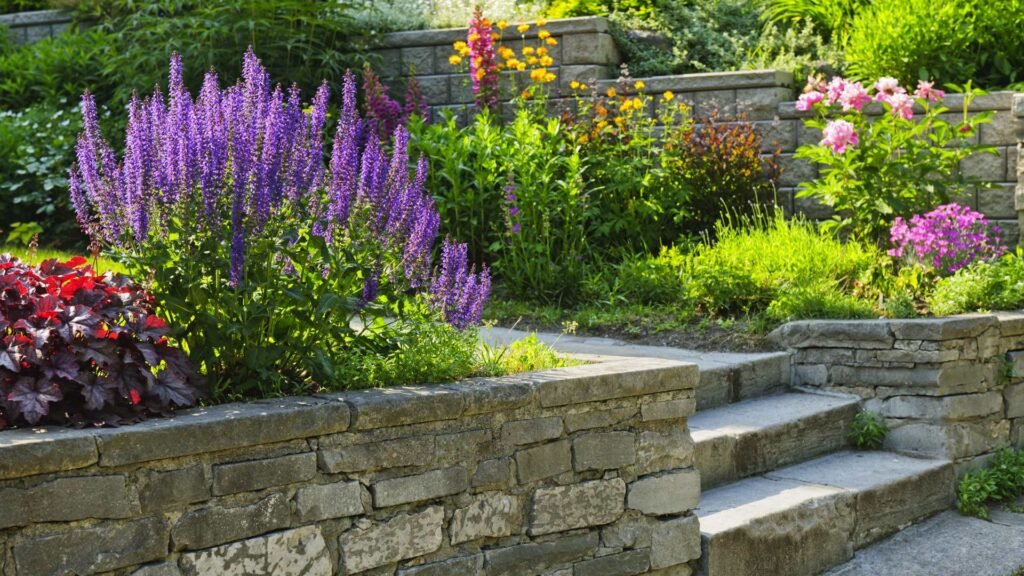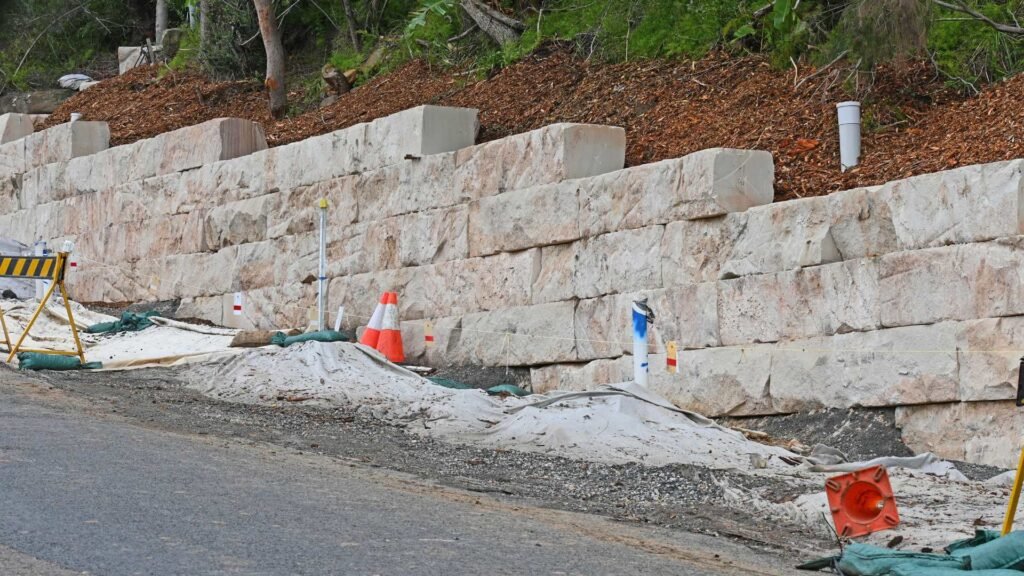Welcome to your ultimate guide to low-cost retaining wall ideas for Australian gardens! Whether you’re dealing with a sloping yard, erosion, or simply want to add a touch of structure to your outdoor space, building a retaining wall doesn’t have to drain your wallet. In Australia, where the terrain can vary, homeowners often seek affordable solutions that not only hold back soil but also enhance the overall aesthetic of their landscapes. In this post, we’ll explore practical, budget-friendly retaining wall ideas that blend functionality with style, so you can transform your garden without overspending. Let’s dive into the world of affordable retaining walls that are perfect for Australian conditions.
The best low-cost retaining wall ideas in Australia include using timber sleepers, concrete blocks, gabion walls, and recycled materials like railway sleepers. These options provide affordable, durable, and stylish solutions for managing sloped land and enhancing garden aesthetics. Choosing locally sourced or recycled materials can further reduce costs, making retaining walls both budget-friendly and environmentally sustainable.
- Understanding Retaining Walls
- Top Low-Cost Retaining Wall Ideas
- DIY Vs Hiring A Professional: What’s Right For You?
- Cost Breakdown: Estimating Your Retaining Wall Budget
- Tips For Saving Money On Retaining Walls
- Examples And Inspiration From Australian Gardens
- FAQs: About Low Cost Retaining Wall Ideas Australia
- Conclusion
Understanding Retaining Walls
A retaining wall is a structural element used in landscaping to hold back soil, prevent erosion, and manage water drainage in sloped or uneven areas. These walls create level surfaces in gardens or yards, allowing homeowners to make the most of their outdoor space. Retaining walls are commonly used in places where soil needs to be stabilized, like in hilly or sloped gardens.
In Australia, retaining walls are particularly important due to the diverse climate and terrain. From the arid regions to the coastal areas, many Australian properties are built on uneven or sloped land. Heavy rainfall in certain regions can lead to soil erosion, making a retaining wall a crucial feature in managing the landscape and preventing damage. With the right design, a retaining wall can help maintain the integrity of the soil while also adding an aesthetic element to your outdoor space.
When building a retaining wall on a budget, the key considerations include choosing the right materials, determining the appropriate size, and deciding whether to tackle the project as a DIY job or hire a professional. Budget-friendly materials like timber or concrete blocks are popular, while opting for a smaller wall or phasing construction can help keep costs down. For homeowners with time and tools, DIY can be a cost-saving approach, but for more complex designs or taller walls, professional installation is worth considering.

Top Low-Cost Retaining Wall Ideas
When it comes to designing a functional and stylish garden, a retaining wall can be a great solution. However, many people worry about the cost of installing one, especially when it comes to materials and labor. The good news is that there are plenty of affordable options that not only get the job done but also look fantastic. In this section, we’ll explore six top low-cost retaining wall ideas, including timber, concrete, gabion walls, and more. Each of these options provides different benefits depending on your needs, budget, and style preferences. Let’s take a closer look at each one.
Timber Retaining Walls
One of the most popular and budget-friendly options for building a retaining wall is using timber. Timber retaining walls blend beautifully with natural landscapes, making them a favorite for homeowners looking for a rustic or natural garden aesthetic. The great thing about timber is its affordability and availability across Australia. Treated pine, in particular, is a common choice for retaining walls because it’s durable and resistant to moisture, ensuring your wall lasts for many years with minimal maintenance.
Timber retaining walls are best suited for small garden beds, borders, or low walls. If you’re working with a limited budget and want to keep things simple, this is a fantastic option. One of the key benefits is that timber walls are easy to install, even for those new to DIY projects. For added longevity, make sure to use treated timber, as this will resist rot and termite damage.
- Cost-saving tip: Use treated pine instead of more expensive hardwoods. Treated pine is not only cost-effective but also designed to withstand the elements, making it a durable choice for retaining walls without breaking the bank.
Concrete Blocks or Sleepers
If you’re looking for something a little more durable than timber, concrete blocks or sleepers are a great option. Concrete is known for its strength and longevity, making it ideal for medium-height retaining walls that need to support more weight. Despite its robust nature, concrete can still be a relatively low-cost solution, especially if you opt for simple designs and plan to install the wall yourself.
Concrete blocks offer a modern, sleek appearance, making them perfect for contemporary garden designs. If you’re concerned about installation costs, concrete blocks are often a good DIY project for someone with basic building skills. Many home improvement stores sell blocks that interlock, making construction easier without the need for mortar.
- Cost-saving tip: Stick to basic designs and avoid intricate patterns, as these can drive up both material and labor costs. Simple and functional is the way to go if you want to save on your retaining wall project.
Gabion Walls
Gabion walls are an increasingly popular choice for homeowners looking for an affordable and environmentally friendly retaining wall solution. These walls are made from wire mesh cages filled with stones, rocks, or even recycled materials like broken concrete. The materials for filling gabion walls are often inexpensive or even free if you source them locally.
One of the key benefits of gabion walls is their versatility. They can easily fit into both rustic and modern garden designs, depending on the materials you use to fill the cages. They’re also incredibly sturdy, as the heavy stones within the cages act as a natural barrier against soil erosion. Gabion walls are relatively easy to install, and many people find that they can do it themselves with minimal tools.
- Cost-saving tip: Use stones or materials that are readily available in your area. By sourcing locally, you’ll not only reduce costs but also create a retaining wall that blends naturally with your surroundings.
Railway Sleepers (Recycled or New)
Railway sleepers, whether recycled or new, offer an eco-friendly and affordable option for building retaining walls. Recycled railway sleepers, in particular, can be a fantastic choice for those looking to create a rugged, industrial look in their garden. These sleepers are often made from hardwood, making them incredibly durable and long-lasting.
Recycled railway sleepers can add a lot of character to your outdoor space, and because they’ve been pre-treated for weather resistance, they are perfect for retaining walls. They are especially well-suited for gardens with a rustic or natural feel, where a more polished look might not be necessary.
- Cost-saving tip: Look for second-hand railway sleepers. Many demolition or salvage yards sell old railway sleepers at a fraction of the cost of new ones, allowing you to build a solid and attractive retaining wall for much less.
Dry-Stacked Stone Walls
If you’re looking for a natural aesthetic, dry-stacked stone walls are a great choice. These walls are built without mortar, using stones stacked on top of each other to create a sturdy barrier. The appeal of dry-stacked stone walls lies in their simplicity and the minimal materials needed. If you already have stones on your property, this can be a highly affordable option.
Dry-stacked stone walls work best for low retaining walls and garden borders. They provide a charming, timeless look that complements almost any outdoor space. Because no mortar is required, they’re a more flexible and DIY-friendly option for homeowners who want to save money while building a strong, attractive retaining wall.
- Cost-saving tip: Use stones you already have on your property or source them from local quarries to save on material costs.
Corrugated Iron Retaining Walls
For those looking for a modern and unique retaining wall design, corrugated iron is an excellent option. Corrugated iron sheets are affordable, easy to work with, and offer a distinctive industrial aesthetic. These walls are best suited for contemporary garden designs where a sleek, modern look is desired.
While corrugated iron might not seem like the sturdiest material for a retaining wall, it can be very effective when combined with timber posts for structural support. This method creates a strong, inexpensive retaining wall that stands out from more traditional options.
- Cost-saving tip: Combine corrugated iron with timber posts to create a sturdy, low-cost retaining wall. This hybrid design maximizes strength while keeping your expenses in check.
By considering these affordable retaining wall ideas, you can create a functional, attractive solution for your garden without exceeding your budget. Whether you opt for the natural charm of timber, the durability of concrete, or the unique appeal of gabion walls, there’s a low-cost option that will work perfectly for your outdoor space.

DIY Vs Hiring A Professional: What’s Right For You?
When it comes to building a retaining wall, one of the key decisions you’ll face is whether to tackle the project yourself or hire a professional. Each option has its pros and cons, and the right choice depends on several factors, including the complexity of the design, the scale of the project, and your budget.
When DIY Makes Sense
If your retaining wall project involves a simple design and is relatively small in scale, going the DIY route can be a great way to save money. Projects like garden borders or short timber or stone walls are typically manageable for those with basic tools and some DIY experience. Additionally, if you already have access to the necessary equipment—like shovels, wheelbarrows, and spirit levels—you can significantly cut costs. DIY also allows you to work at your own pace, giving you control over every aspect of the project, from material selection to finishing touches. Plus, there’s the satisfaction of building something with your own hands.
When to Hire a Pro
However, not all retaining wall projects are suitable for DIY. If your wall is higher than a meter, involves more complex designs, or requires dealing with drainage systems or building permits, hiring a professional is often the safer, smarter choice. Australian building codes may require council approval for taller walls, and professionals will ensure compliance with these regulations. Complex projects, especially those on uneven or challenging terrain, require expertise to avoid issues like improper drainage or structural failure, which could lead to costly repairs down the road.
Balancing Cost and Effort
Ultimately, the decision comes down to balancing cost and effort. While DIY projects can be budget-friendly, they require time, effort, and skill. On the other hand, hiring a professional will increase your overall cost, but you gain peace of mind knowing the job is done correctly and up to code. If you’re unsure, consider consulting a professional for a quote and advice before deciding which path to take.

Cost Breakdown: Estimating Your Retaining Wall Budget
When planning a retaining wall, it’s essential to get a clear picture of the potential costs involved. Building a retaining wall doesn’t have to break the bank, but knowing where your money will go can help you make smart decisions.
Material Costs
The cost of materials can vary widely depending on the type of wall you’re planning. For a timber retaining wall, using treated pine sleepers, you’re looking at around $40 to $60 per sleeper. Hardwood sleepers are more durable but come at a higher price, typically ranging from $70 to $100 each. If you’re considering concrete blocks, prices usually start at $3 to $6 per block, and for a standard-sized wall, you’ll need quite a few blocks, so the costs can add up. Gabion walls are a great low-cost option, with wire cages costing about $15 to $30 each. The fill materials, like stones or recycled bricks, can often be sourced cheaply or even for free, especially if you’re using recycled or locally sourced materials.
Labor Costs
Labor is another significant factor to consider. Hiring a professional to build your retaining wall will add to your budget, with labor costs in Australia generally ranging from $50 to $100 per hour. A small, straightforward wall might take a day or two to complete, while a more complex or taller wall could take longer. While DIY can save on labor costs, a professionally built wall often ensures longer-lasting quality and proper adherence to safety regulations, making it a wise investment for more challenging projects.
Other Factors
In addition to materials and labor, other costs may arise. Foundation work is crucial to the longevity of your wall and may require some excavation, especially if the ground is uneven or unstable. You’ll also need to consider drainage systems to prevent water build-up behind the wall, which could lead to failure. Drainage solutions like gravel and perforated pipes will add to the cost, but they’re necessary for most retaining walls. Additionally, depending on the height and location of your wall, you might need to get a building permit from your local council, which could add a few hundred dollars to your budget.
Cost-Saving Tip
One great way to save on your retaining wall is by sourcing materials locally. Shipping heavy items like timber or concrete can significantly add to your costs, so buying from local suppliers can help keep things affordable. Additionally, using recycled materials like old railway sleepers or stones from your property can also bring down the overall expense while adding a unique, eco-friendly touch to your design.

Tips For Saving Money On Retaining Walls
Building a retaining wall doesn’t have to be a costly project. With a little creativity and planning, you can construct a durable and attractive wall while staying within your budget. Here are a few practical tips to help you save money on your retaining wall project without compromising quality or style.
Sourcing Affordable Materials
One of the best ways to save money is by sourcing your materials wisely. Instead of heading straight to the big-name hardware stores, look for sales or discounts at local suppliers. You can also explore second-hand options, such as checking out demolition yards or online marketplaces like Gumtree, where people often sell unused or excess building materials. Opting for locally available materials can also reduce transportation costs, which can add up quickly, especially if you’re working with heavy items like stone or concrete blocks.
DIY Techniques
If you’re working on a smaller retaining wall, taking the DIY route can drastically cut down your expenses. By building it yourself, you’ll save on labor costs, which can be significant for professional installations. However, safety is key—make sure you understand the basic construction techniques and use the proper tools for the job. For smaller walls (under a meter in height), you can typically manage the project yourself with some careful planning. Just remember to account for drainage, as water buildup behind the wall can cause damage over time.
Recycled and Sustainable Materials
Using recycled materials not only reduces costs but also gives your retaining wall an eco-friendly edge. Consider using recycled railway sleepers, repurposed bricks, or even gabion cages filled with local stones or gravel. These materials are often cheaper than buying new, and they add a unique, rustic charm to your garden. Plus, using sustainable materials can contribute to reducing your overall environmental footprint, which is an added bonus.
Phasing the Project
If you’re on a tight budget, breaking the project into stages can help you manage costs over time. You don’t have to complete the entire wall in one go—start with the most critical sections, and finish the rest as funds allow. This approach also gives you the flexibility to adapt and make changes as needed, without feeling the pressure of a large upfront expense. By spacing out the work, you can spread the cost while still making steady progress toward completing your retaining wall.
By being resourceful and strategic, you can create a functional and visually appealing retaining wall that fits your budget. These tips will not only save you money but also make the project more enjoyable and rewarding in the long run.

Examples And Inspiration From Australian Gardens
When it comes to retaining walls, Australians are no strangers to creativity and practicality. In fact, many homeowners across the country have successfully tackled sloped landscapes and erosion issues without breaking the bank. Let’s take a look at a few inspiring examples of low-cost retaining wall projects that combine both functionality and aesthetic appeal.
One popular case comes from a suburban home in Melbourne, where the homeowners used recycled railway sleepers to create a sturdy yet rustic retaining wall around their garden. Not only did this help them control soil erosion on their sloped backyard, but the use of recycled materials also kept costs low. To enhance the look, they planted native Australian plants like kangaroo paw and bottlebrush, which added a natural, vibrant touch that complemented the earthy tones of the sleepers.
Another great example can be found in a coastal home in Queensland, where a family opted for gabion walls to build a modern, industrial-style retaining wall. Gabion cages, filled with locally sourced stones, provided a durable and cost-effective solution to prevent soil from washing away during the rainy season. The simplicity of the design made it an affordable option, and the mix of natural stone colors added a unique texture to the property’s overall landscape design.
For those looking for something more modern, a Sydney-based family used corrugated iron sheets and timber posts to create a sleek, contemporary retaining wall. This design not only kept costs down but also offered a minimalist, stylish look that perfectly matched their home’s modern architecture. They further elevated the aesthetic by adding small LED lights along the base of the wall, creating a beautiful night time glow.
These examples show that retaining walls can be both budget-friendly and visually striking. By incorporating local materials and thoughtful design elements, it’s possible to create a retaining wall that not only serves its practical purpose but also enhances the beauty of your outdoor space.

FAQs: About Low Cost Retaining Wall Ideas Australia
Conclusion
In conclusion, building a retaining wall doesn’t have to be an expensive or overwhelming project. With a variety of low-cost materials like timber sleepers, gabion walls, and recycled items, you can create a functional and visually appealing solution for your outdoor space without exceeding your budget. The key is to take the time to research different materials and construction methods, ensuring that you choose an option that fits both your financial limits and the unique needs of your garden. Whether you opt for a DIY approach or seek professional help for larger projects, planning ahead will help you save money while achieving a design that enhances your landscape. Ultimately, the best retaining wall is one that blends seamlessly with your garden’s aesthetic, holds up against the elements, and provides the practicality you need at a cost you can afford. Now is the perfect time to start planning and bringing your retaining wall vision to life.
About the Author:
Mike Veail is a recognized digital marketing expert with over 6 years of experience in helping tradespeople and small businesses thrive online. A former quantity surveyor, Mike combines deep industry knowledge with hands-on expertise in SEO and Google Ads. His marketing strategies are tailored to the specific needs of the trades sector, helping businesses increase visibility and generate more leads through proven, ethical methods.
Mike has successfully partnered with numerous companies, establishing a track record of delivering measurable results. His work has been featured across various platforms that showcase his expertise in lead generation and online marketing for the trades sector.
Learn more about Mike's experience and services at https://theleadguy.online or follow him on social media:
